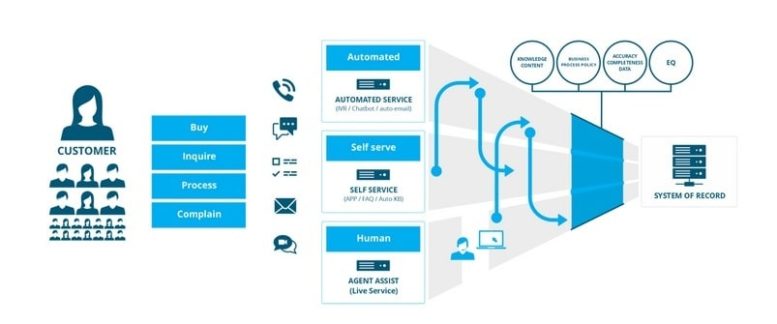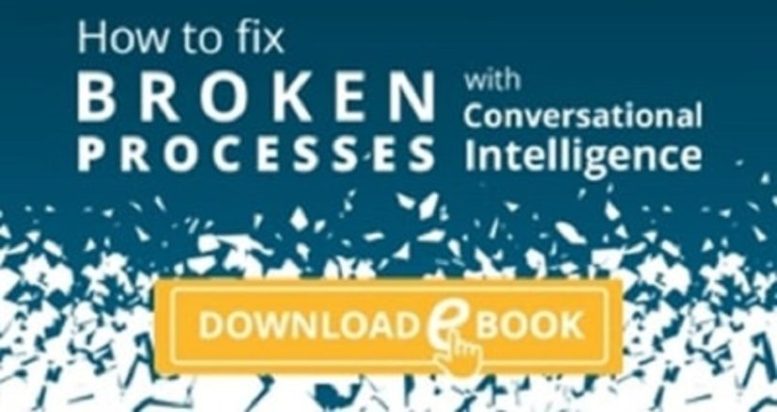How Conversational Intelligence plays a pivotal role in your digital transformation strategy in your contact centre
Every organisation is at a different maturity stage in their digital transformation strategy but, one thing is for sure, even some of the most-mature organisations are just scratching the surface.
The days of adding more one-off, independent or silo-based technologies and software to your business are becoming increasingly rare. Data is not just valuable, it is critical to the whole business. The interaction, coordination, federation and leverage of any investment is key.
Data is clearly a way to gain competitive advantage, but we are all standing under a waterfall of data holding an old colander and catching only 1 per cent, with most of that leaking away.
Ultimately, most businesses and organisations are striving for some or all the following:
» Improved service
» Increased revenue/growth
» Optimised cost
This is ultimately achieved by building a digital and data strategy that leverages nearly every sub system in your arsenal: including call centres, chatbots, websites, apps, IVAs, service management tools, field service tools, CRM, ERP and more. But digital strategies are not exclusively about kit or clouds, as these are the tools that facilitate the strategy. Before this we must look higher in the stack to ensure everything we do is aligned to a corporate-wide digital strategy.
The customer (and potential customer/market) must be at the centre of your digital strategy. You need to understand how you influence or at least recognise a need that your service or solution can solve. This means communication is key, however this is regularly misunderstood. Today, we hear so much about multi-channel or omnichannel, but this is just the connection or the ability to transition from one channel to another, for example from chat to voice. While channel is important to give choice to the customer and cost alignment to the vendor, it is not strategically important as it is passive, being merely the connector to the service bearer.
Service bearers fall into three categories, namely:
» Human
» Self-service
» Automated
These service bearers can handle one or many services. For example, humans may have a one-to-one phone call or video call, send an email, or hold a live human-to-human chat session. Self-service service bearers include web, apps, FAQs and knowledge bases. Automated service bearers include IVR, IVA, chatbots auto-email and the like.
These service bearers need three ingredients to be successful, namely:
» Content and knowledge
» Process and policy
» Understanding
Let’s map out what we have discussed so far:
The customer, or potential customer, may be interacting with you to buy, enquire or process (return, move money, pay or complain). They have a range of channels available that connect to service bearers, namely peer-to-peer self-service, automated service-bearers, or human service bearers.
To get things done transactionally, all service bearers will have to connect to your system of record/s and:
» understand the question/action
» know the answer
» know the policy or process and whether this individual customer or prospect is allowed to make this transaction.
This is where your digital strategy comes into play. We typically find our human service bearers are good. We are intelligent beings and if we don’t know something we can ask, take action and remediate. The self-service and the automated channels are not that intelligent. They are typically static, having been built to do a job that rapidly dates. How often do you add products, services, changes to pricing or packaging, policy changes and so on?
Keeping everything in harmony is extremely complex and very few have cracked it. This is amplified when the service bearers have their own silo digital strategy, each with its own knowledge, CRM, process, procedure and interpretation of understanding.
Ultimately, the self-service and, in particular, automated service become outdated, do not understand the customer and, metaphorically, become the next generation of music on hold, merely delaying the inevitable demand “Let me speak to a human being”. This is amplified when things go wrong outside of productization or service policy. The automated channel may work when there are simple tasks, but when things go “off book” they are frankly damaging to your ultimate digital strategy to make money, save money, and improve service and experience.
There are two sides of frustration:
» The customer frustration and inefficiency
» The vendor frustration and inefficiency
It is not only about making it easier for the customer, it is also about making it easier for you.
The customer side of frustration is probably self-evident to you, although there is a lot missing. Organisations a pretty good at tracking and managing known issues, but are poor at detecting and therefore tracking, managing and remediating unknown issues. This is. because many of the reasons are just not known or reported. Two big areas of focus must be centred on whether the automated service bearer (IVR, IVA, chatbot) is motivated to declare to you how badly they are serving your customer? Or worse, do they have the ability to understand the question or request when it is outside of the norm? Also, your human resources, whether sales, service or support, are a proxy to the system of record. They all must key-in data relating to the request and action. This is prone to error, abuse, fatigue and a non-uniform approach to data capture. It is widely recognised that only a very small percentage of the conversation is captured, not only the obvious request but also underlying issues.
Speech analytics is now being used to tune your digital engine. You can remove workload from your human service bearers, check and challenge your automated service bearers and find hidden gems of improvement – from spotting sales opportunities, broken processes and missing policies or knowledge, to ensuring the true voice of the customer is heard.



 Andrew White is CEO at Contexta360
Andrew White is CEO at Contexta360



